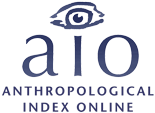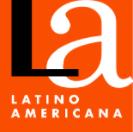El Luxury and its discontents in contemporary China
Keywords:
luxury, consumption, wealth, ChinaAbstract
Based on ongoing fieldwork with a group of wealthy entrepreneurs who were formerly avid consumers of luxury brands, this paper examines emerging critiques of luxury consumption in urban China. I begin with an overview of the key roles luxury brands have played during the past two decades in signifying membership in exclusive social networks in China and mediating their associated gift economies. I then look at more recent changes brought on by several factors: anti-corruption campaigns, nationalist aversion to “foreign” luxury, the growing “commonness” of luxury brands in elite social circles, and increasing “inflation” in the gift economy. These factors have begun to undermine the previous meanings and functions of luxury, and to many wealthy Chinese, luxury brands now deliver something very different from the “global recognition” they once promised. The contradictions inherent in luxury consumption, I argue, are pushing members of China’s new rich towards more austere forms of status distinction including religious devotion and other traditional forms of spiritual and bodily self-cultivation.References
Bourdieu, Pierre (1984) [1979]. Distinction: A Social Critique of the Judgment of Taste. Cambridge MA, Harvard University Press.
–––(1987) [1979]. “The Forms of Capital”, en: Handbook of Theory and Research for the Sociology of Education. New York, Greenwood,pp. 241- 258.
Buckley, Christopher (1999). “How a Revolution Becomes a Dinner Party: Stratification, Mobility, and the New Rich in Urban China”, en: Culture and Privilege in Capitalist Asia. London, Routledge.
Cao, Nanlai (2010). Constructing China’s Jerusalem: Christians, Power, and Place in Contemporary Wenzhou. Stanford, Stanford University Press.
Hu, Hsien Chin (1944).“The Chinese Concepts of ‘Face’”, American Anthropologist New Series, Vol. 46, Issue 1, pp. 45-64.
Jiu Yue (2004). “Yi Ben Zazhi He Yige Jieceng (A Magazine and a Strata)”, en: Toudengcang (First Class) 2: Preface. Chengdu, China.
Keane, Webb (1997). Signs of Recognition: Powers and Hazards of Representation in an Indonesian Society. Berkeley, University of California Press.
Kipnis, Andrew (1995). “Face: An Adaptable Discourse of Social Surfaces”, Positions3, Nº 1, pp. 119-148.
Lamont, Michele (1992). Money, Morals, & Manners: The Culture of the French and American Upper-Middle Class. Chicago, University of Chicago Press.
McCracken, Grant (1988). Culture and Consumption: New Approaches to the Symbolic Character of Consumer Goods and Activities. Bloomington, University of Indiana Press.
Osburg, John (2013). Anxious Wealth: Money and Morality Among China's New Rich. Stanford, Stanford University Press.
Pieke, Frank (1995). “Bureaucracy, Friends, and Money: The Growth of Capital Socialism in China”, Comparative Study of Society and History Nº 37, pp. 494-518.
Smart, Alan (1993). “Gifts, Bribes, and Guanxi: A Reconsideration of Bourdieu’s Social Capital”, Cultural Anthropology, Vol. 8, Nº 3, pp. 388-408.
Shui Shui (2004). "Nanshi Yipin (Men’s Taste In Clothing)”, Toudengcang (First Class) 10, pp. 82-86. Chengdu, China.
Wank, David (1996). “The Institutional Process of Market Clientelism: Guanxi and Private Business in a South China City”, The China Quarterly, Vol. 147, pp. 820-838.
Wank, David (1999). Commodifying Communism: Business, Trust, and Politics in a Chinese City. New York, Cambridge University Press.
Yi Hui (2004). “Toudengcang, Huozhe Shouxi Fengdu (First Class, Or Elite Style)”, en: Toudengcang (First Class) 1: Preface. Chengdu, China.
























